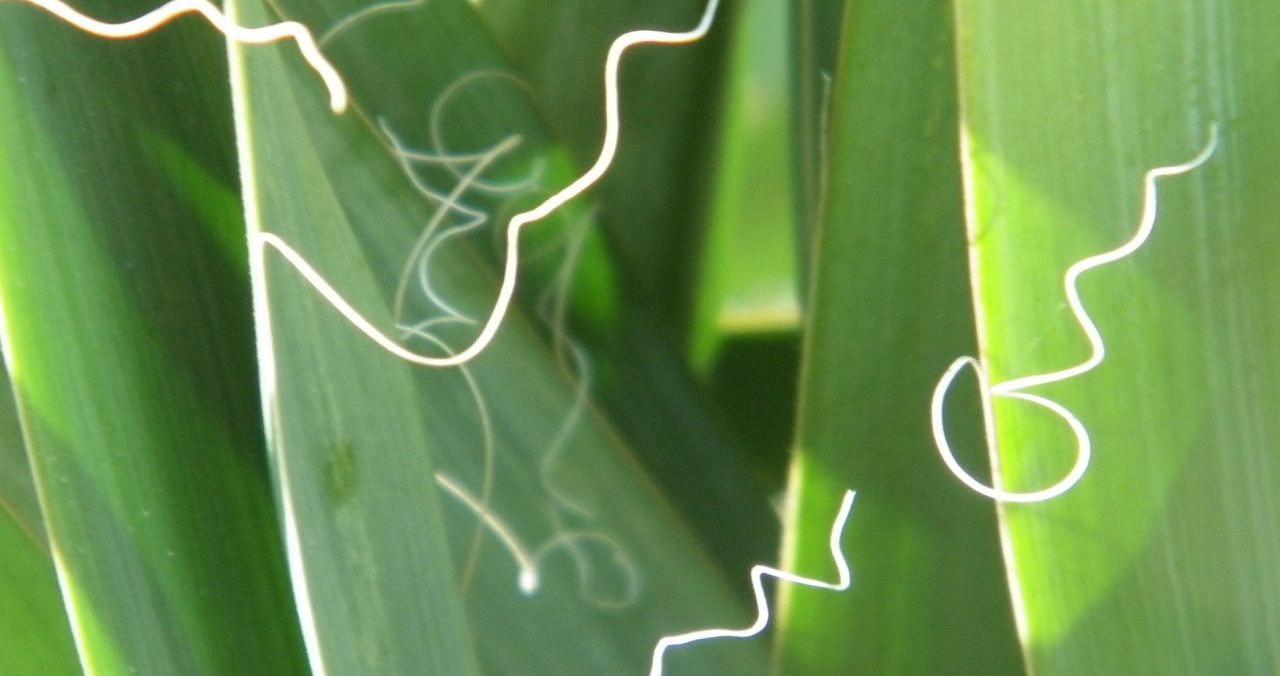As I walked passed an abandoned raised bed on Main Street, Babylon Village, I came across yucca plants. They were in the process of sending up tall flower shoots. I decided to photograph the evolving process of flowering, and seed formation. It also prompted me to write about my experiences with this plant.
Yucca can tolerate long drought and high temperatures. It is found in desert habitats but one species grows on Long Island. Scientists name it Yucca filamentosa. The species name comes from long, twirled threads that come off the edges of the sword-like leaves. I decided to transplant a yucca plant to make way for a garden. I started digging, and digging, and the root kept descending. I stopped at three feet and pulled the root. I could not. More digging, another foot and finally the plant yielded. This long tap root is why it can withstand long drought periods. There is always moisture in the ground at four feet below the surface.
This encounter reminded me of a gathering I attended in Georgia. It involved “primitive skills.” There are groups of people trying to develop skills to survive in case of a dire catastrophe. One the first day, we all learned how to make cord (rope/string). I was given three soaked yucca leaves. The goal was to extract the tough veins to use as thread-like material. Using a pen knife, I drew the blade down the leaf dozens of times to separate the fibers. There was plenty of time ( they call it Indian time). I learned how to twirl the fibers and add to the growing string. The twisting and adding required practice to develop the skill.
In Best Market, I’ve seen yucca root in the produce isle. It can be cooked and mashed. I have not tried this yet.
The yucca stalk produces white bell-shaped flowers at the end of June. I was fascinated one day when I inspected the flower up close when a white moth flew out. This is the yucca moth. Its white color matches the flower color exactly thereby decreasing the chances of being eaten by birds. I learned from the Audubon Society Field Guide to North American Wildflowers that the flower petals can be used for salads and the “fruits can be cooked and eaten with seeds removed.” P 616
The dried stalks are useful for starting a fire. I tried this. I broke off a stalk and cut an 18 inch section from the bottom. Using my pen knife, I pointed the thick end. I cut another thick section of a stalk to make a foot-long board. I cut it in half and sculpted a pit that was the size of the point. By spinning the stalk with its point set in the pit of the bottom board, the friction created by spinning the stalk back and forth with the palms of your hand causes small fibers to break off. The fibers become hot enough to be used to start a fire. It took a lot of practice before I was able to start a fire. My friend Ted suggested that I have dried tinder ready and close by to my bow drill spinning so that when I saw glowing red-orange speck, I blow on it gently with the tinder snug up against it.
On a trip to the south west, I saw a pair of sandals made from yucca leaves. I liked the fact that people were using the resources arund them to make objects that they could use.
I took a photo of a yucca plant in my back yard during a snow storm. Only the tips of the bayonet-like leaves stuck out. This is my kind of photograph, simple, with a plain background, shadows and nice composition. We can’t ask plants to pose for us, so we have to jockey around until we find an image that brings out the best. For yucca, it’s the wild frenzy of its spiky leaves splayed out in all directions.
I must admit that I have a passion for botany. Members of the Long Island Botanical Club go on field trips and identify discoveries. They have added invaluable information to us about the plants we live with ( or live with us). If I find a flower that is new to me, I pick it, bring it to my studio, put it in water, take out my identification books, make sketches and learn what I can. Having done this for decades, I can remember their names and admire them more.

Julie Stock
Your passion for botany is contagious!
tom stock
Julie,
my passion for botany arose when I found many plants in my own backyard that I didn’t know. Now I know.
dad